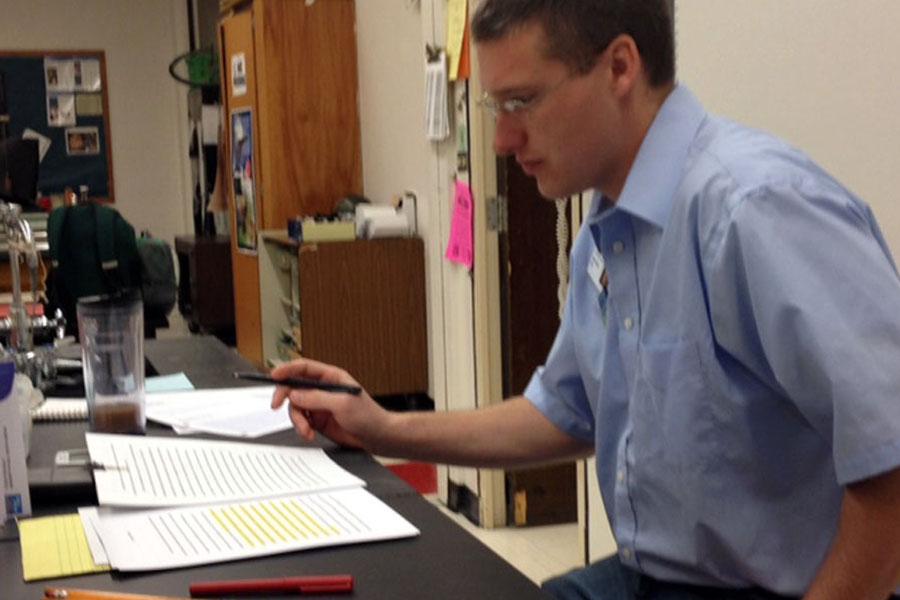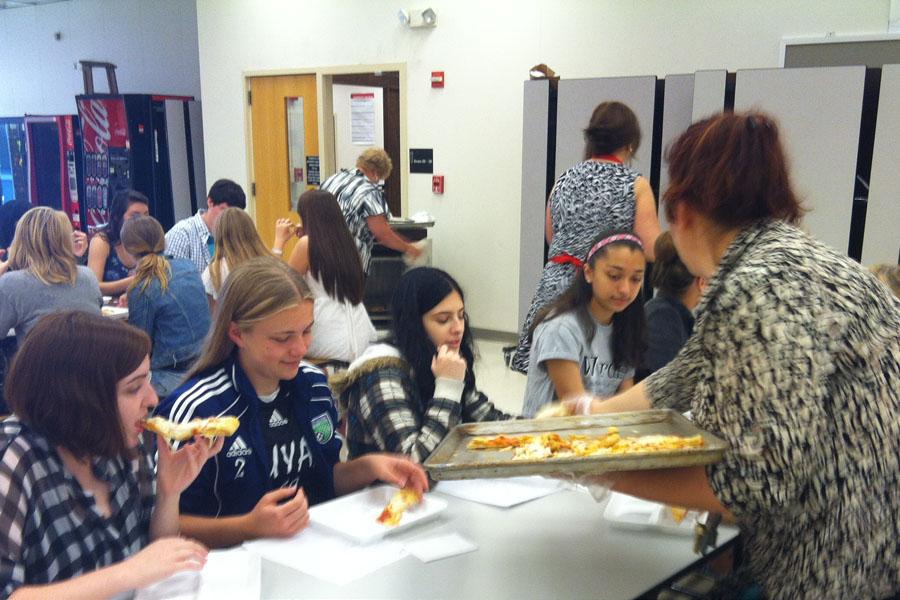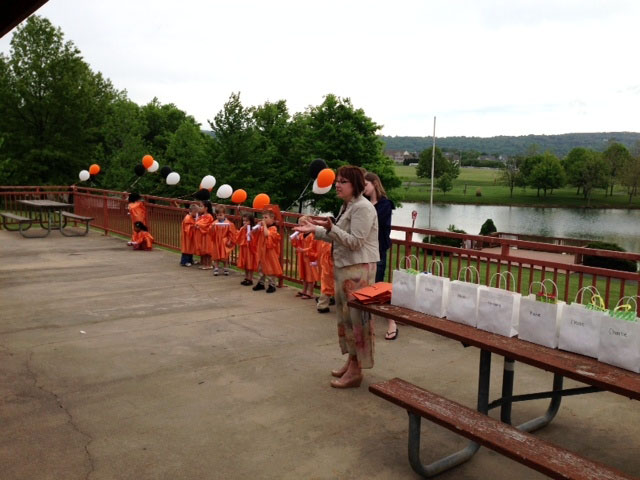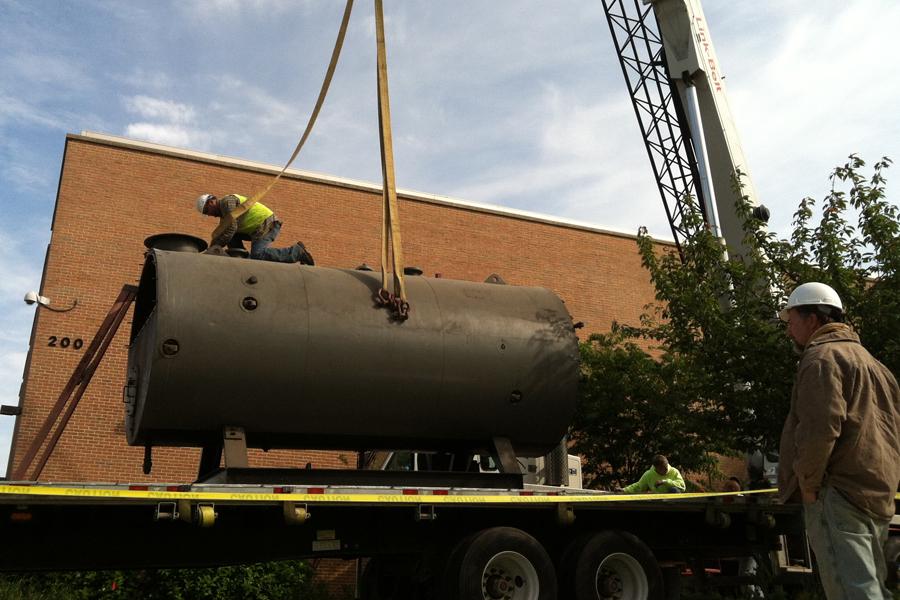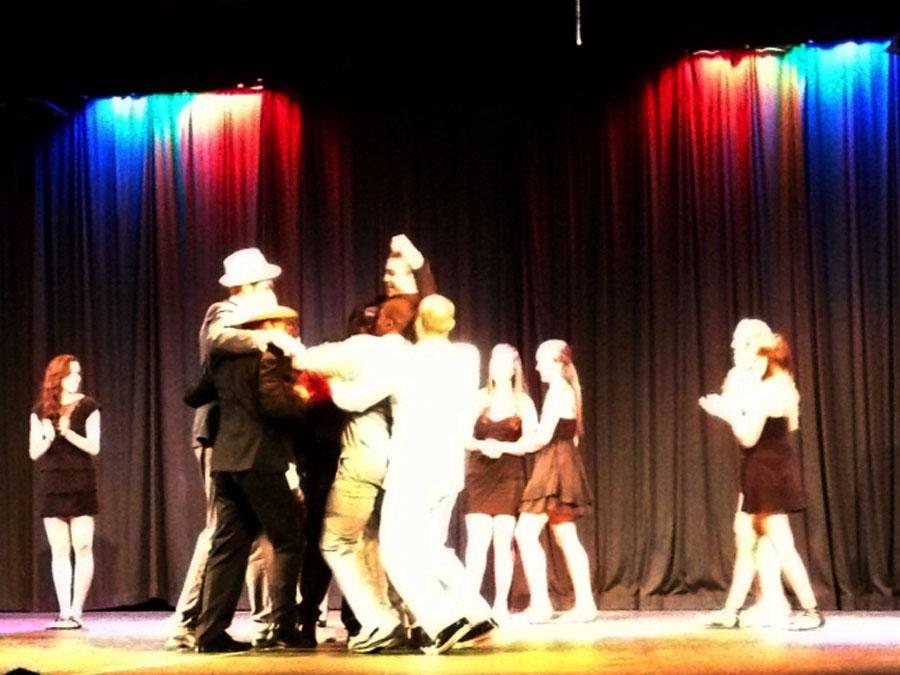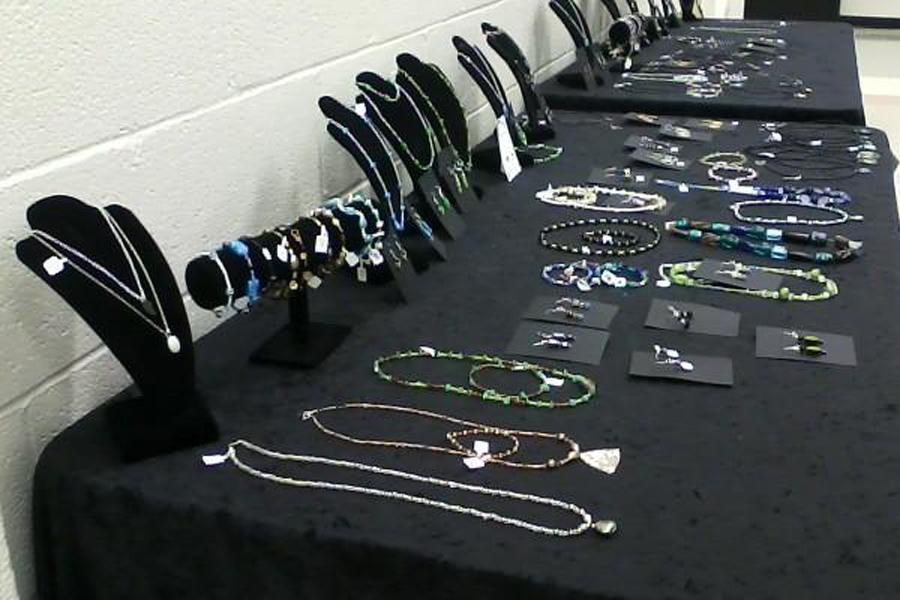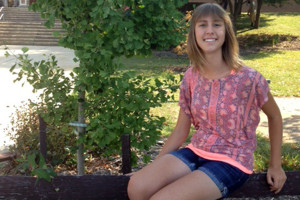Dan Burr, a physics teacher at Middletown High School, came into school last Tuesday feeling less than his best. Burr was nauseous and tired, leaving him unable to participate in a previously arranged interview. Maybe he could have picked up a virus from one of the roughly 100 students he works with each day, but this was not the case. Trying to describe his ailment, Burr said, “I kind of don’t feel right, it’s one of those things where you’re not sure why.”
Symptoms like this have only been part of the journey that started almost a year ago when Burr decided to make the life-changing decision to donate part of his liver.
One night last spring, after coaching at a track meet, Burr went out to dinner with Don and Sharon Boyer, the longtime track coaches at MHS. Though it started with casual chatter, the conversation soon turned to Bonita Shankle, Don Boyer’s sister.
“(They told me) that she had congenital liver disease, and she needed a liver transplant,” Burr said. The condition, which is genetic, has a variety of effects on the function of the liver, and can either present its effects at birth or later in life, as it did with Shankle.
Shankle was on a waiting list for a transplant from a living donor, and at the time of the discussion there were no offers for a donation by anyone that the family knew. Preference was placed on a living donor, as research has shown that living donations are the most effective method, since the organ is able to start functioning almost immediately after the transplant.
Burr found it “surprising” and troubling that Shankle was struggling to find a donor. He knew that it was possible to donate a portion of the liver and still be able to function normally, but he “didn’t know anything else (about the process)”.
The physics teacher was intrigued and proceeded to look up information at home. He re-opened discussion with the Boyers, who were able to provide even more information for Burr to look over. All the while, the emotional factor of the story continued to have an impact on Burr.
Comfortable with the amount of research that he had done, and driven by his “desire to participate in philanthropy”, Burr said he thought to himself, “I think I can do this.”
“I knew there would be consequences and issues with my own health afterwards, but I knew this was a sacrifice I could make to help someone else out.”
He contacted the Boyers to let them know he was ready to commit to the donation, and shortly after the 2012 school year came to an end, Burr began to go through the matching process.
From the start there was a stroke of luck for the donor and recipient pair. Burr knew from previous knowledge and research that he was an O-negative blood type, also known as the universal donor. “That was a good match,” Burr said.
After the blood test checked out, Burr traveled to Pittsburgh for three days of testing at University of Pittsburgh Medical Center, where he was scheduled to go through numerous interviews, psychological screenings, a CT scan, and a liver biopsy.
“I was lucky enough—thank you, my wife, for making all the wonderful food that she does—that I had a very large and lean liver, so they didn’t have to do the biopsy,” Burr quipped.
With the testing out of the way, Burr focused on preparing himself for the upcoming surgery. He went on a diet and worked out daily, because the doctors had determined that a loss of 10 pounds would help him through the surgery.
The big day arrived on July 24, 2012. Burr remembers it so vividly that he even recalled the day of the week — a Tuesday.
“I was so nervous about it,” Burr said.
Despite his doubts, the surgery and transplant went smoothly.
Burr spent about a week in the hospital. The first two days were relatively pain-free, “because I was highly medicated,” Burr said.
“But the next five days,” Burr paused, almost like he was feeling the pain again, “were horrible. They were weaning me off of the pain medication, so I could actually feel everything.”
Adding to the chaos after the surgery, Burr and his family were also in the process of moving into a new home when the surgery took place. He once again gave praise to his wife, saying, “She had to take care of me, and continue to pack.”
The ordeal of moving into the new house helped him speed up the recovery process, “and not just lie down or sit down all the time. Although I would get yelled at (by my wife) every time I attempted to do something,” said Burr, smiling.
His theory may have proved true, as the doctor said that Burr would have to refrain from work for three months, and Burr was able to return to MHS in less than one.
Upon being asked for pictures of him after the surgery, Burr said, laughing, “I only have a picture of the scar, and I’m not sure you want that,” proceeding to trace with his fingertips an area from approximately the bottom of his ribcage to the lower right side of his abdomen, detailing the extensive nature of the scar.
The scar has had one of the main long-term impacts, as Burr, an avid runner, hasn’t been able to get back into his routine.
“(It’s) mostly because of the abdominal muscles that were cut into,” said Burr, “There’s scar tissue there now, so they’re solid, but it hurts every time you move a certain way. It’s just something I have to get used to.”
All of these effects that Burr dealt with after the surgery were negated by the affect he was able to have on Shankle.
Unfortunately, it isn’t as simple as it sounds, as Shankle passed away in the hospital about three days after the surgery. The transplant was performed perfectly, and the donated liver functioned as expected, as seen by the drop of the toxicity levels in her blood. Complications were caused by a brain aneurysm, which had no relation to the surgery.
“It was the worst possible outcome that I thought could happen,” said Burr, “that the liver wouldn’t work, and she would pass away. Except it wasn’t from any issue with the liver.”
But Burr was comforted by an unexpected influence he had on Shankle. He was told after the surgery that when Shankle found out that she had a donor, “Her life turned around.”
Shankle, who had previously only had been able to move around with the help of a wheelchair or scooter, forced herself to regain the ability to walk again.
“She was able to spend six weeks visiting her family, going on vacation to the beach, seeing her daughter and her granddaughter, so (with the possibility of a transplant) she was able to have those last six weeks of hope.”
Burr encourages everyone to be aware of those who need organ donations. “Anyone can be a living donor. Anyone can donate a liver, kidney, or bone marrow.”



